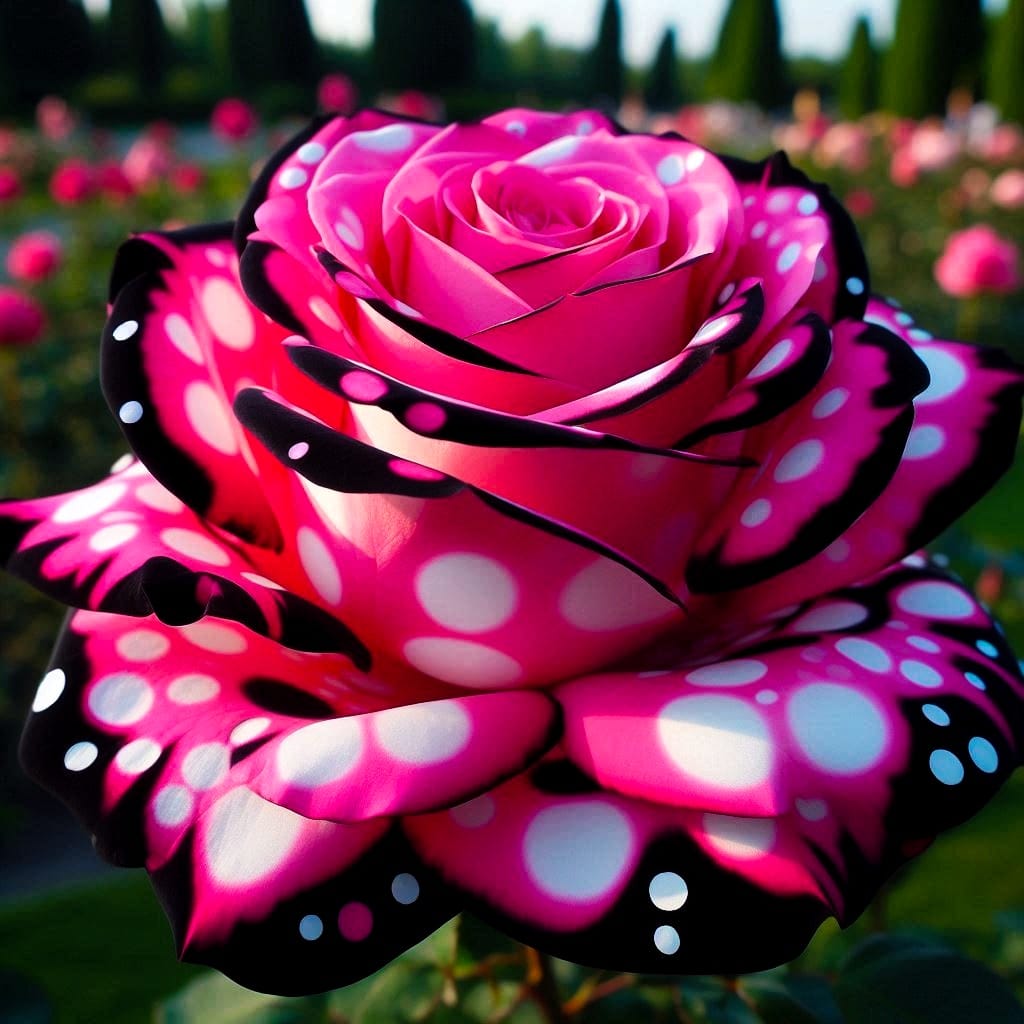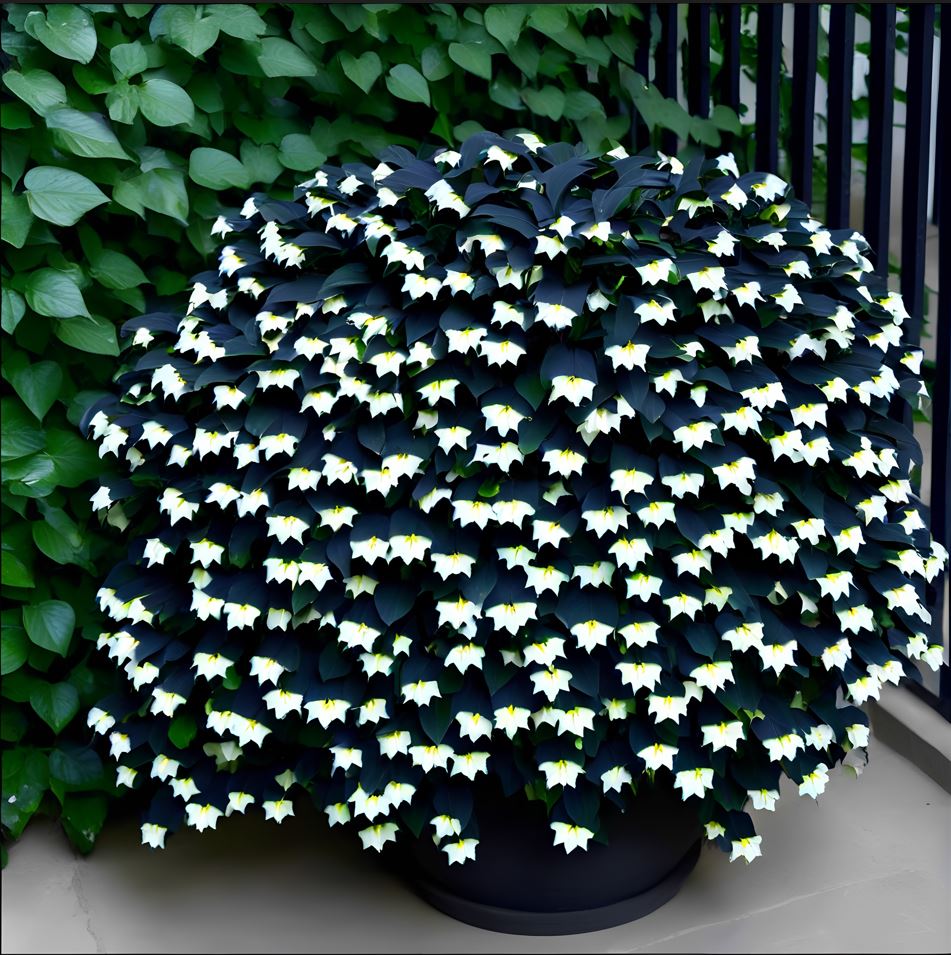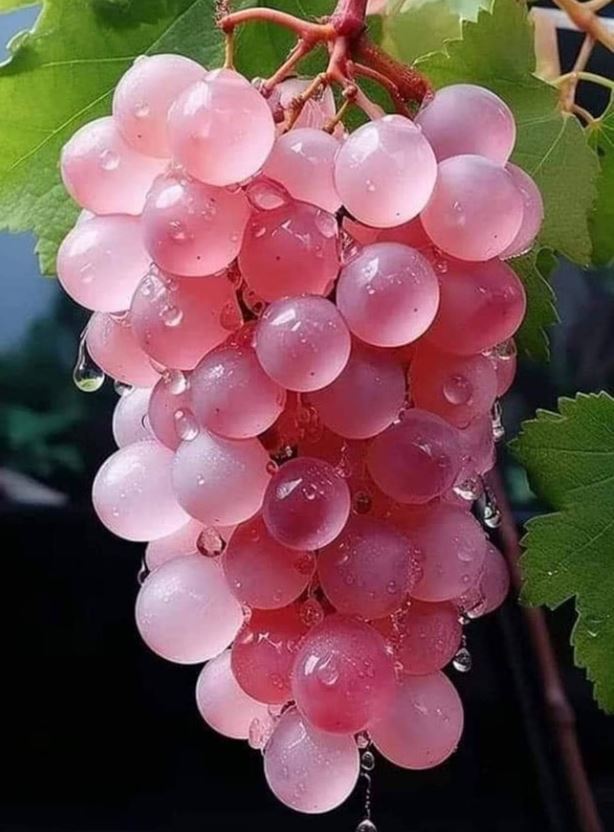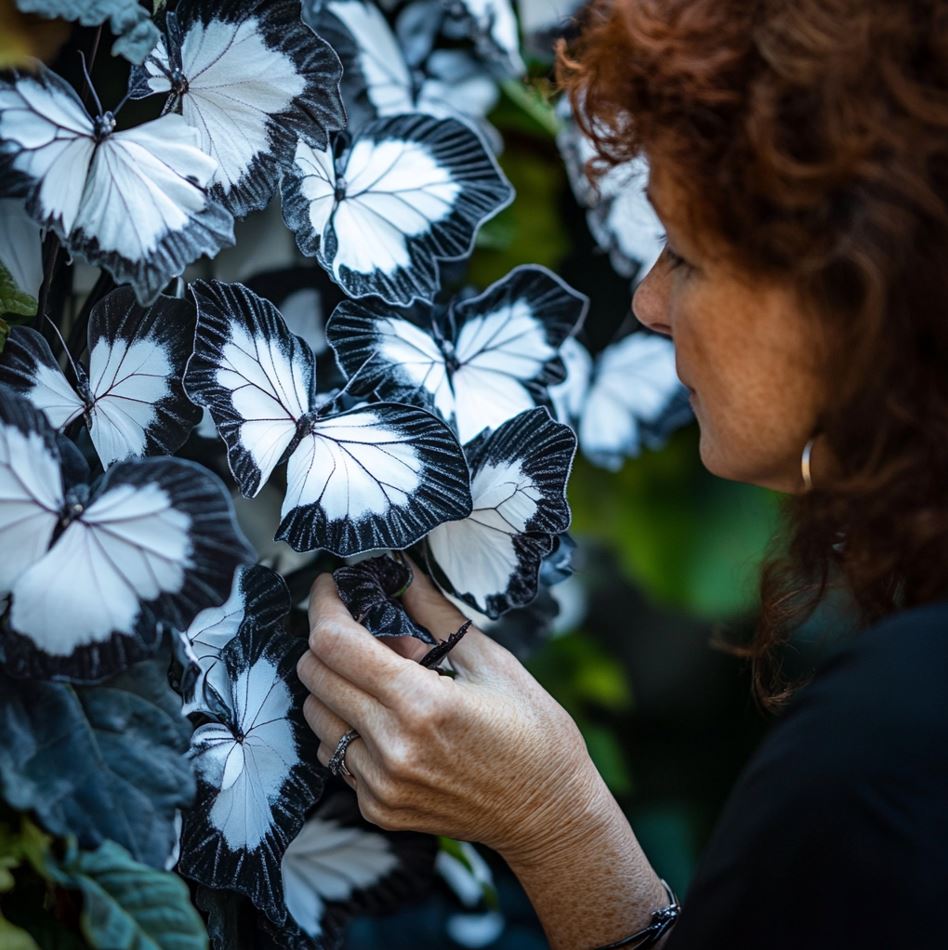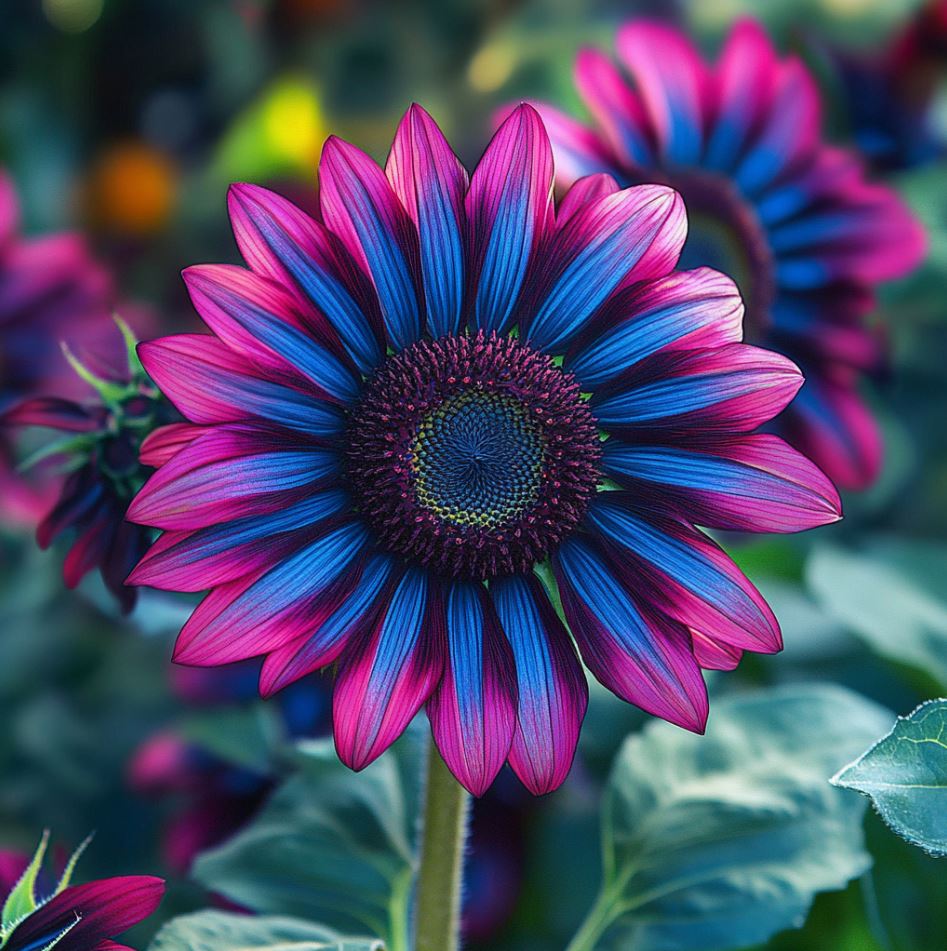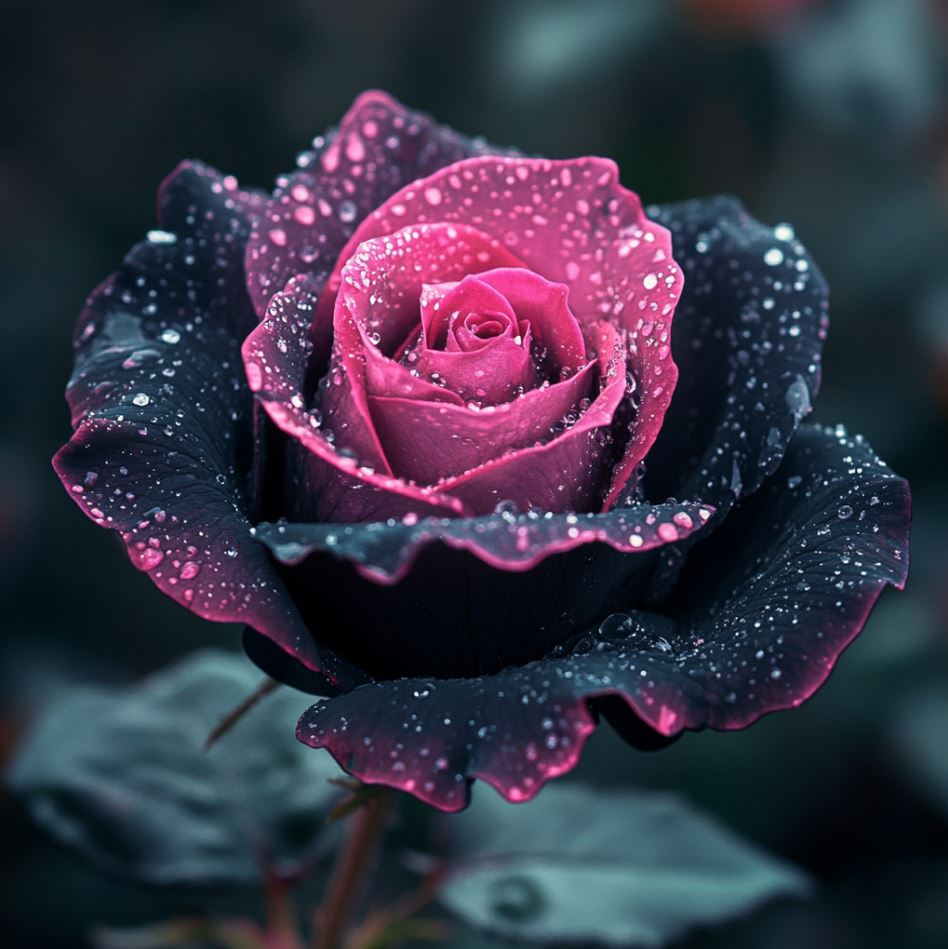From wild meadows to formal yards, the world’s most loved insects are not just an addition to the beauty to your plants…
When their fluttering wings sparkle on your blooms, it is like the whole scene changes, it all comes to life. But there is more; feeding on sweet nectar, they also pollinate your blossoms, so they can seed and the whole cycle of Nature and rebirth can start again.
Together with humble birds, buzzing bees, hovering beetles, crawling hedgehogs and little bacteria in the soil, butterflies of all shades and shapes are a sign of a healthy environment, of a thriving habitat for your plants and flowers, as well as colorful harbingers of joy!
Transforming your garden into a full-blown butterfly retreat brimming with monarchs, tiger swallowtails, and other fluttering wonders, is no longer just a dream. The secret lies in selecting nectariferous and melliferous flowers that beckon these winged jewels.
Indeed, by acquainting yourself with butterflies and presenting them with a bouquet of their favored florals, you’ll find these dazzling winged beings becoming frequent guests.
Once planted, your blossoming paradise will become a magnet, welcoming butterflies in day after day.
Whether your garden is already a butterfly’s dream or you’re looking to cultivate such a paradise, here’s a handpicked selection of the 15 most enticing plants and flowers to support and attract butterflies, coupled with insights on garden design and planting, ensuring your blossoms are always accompanied by these fluttering confetti of nature.
29 Flowers That Promise a Spectacular Butterfly Show Right in Your Garden
If you want to make sure that your garden fills with beautiful butterflies, here are 15 flower varieties guaranteed to bring butterflies to your garden.
1: English Lavender (Lavandula angustifolia)
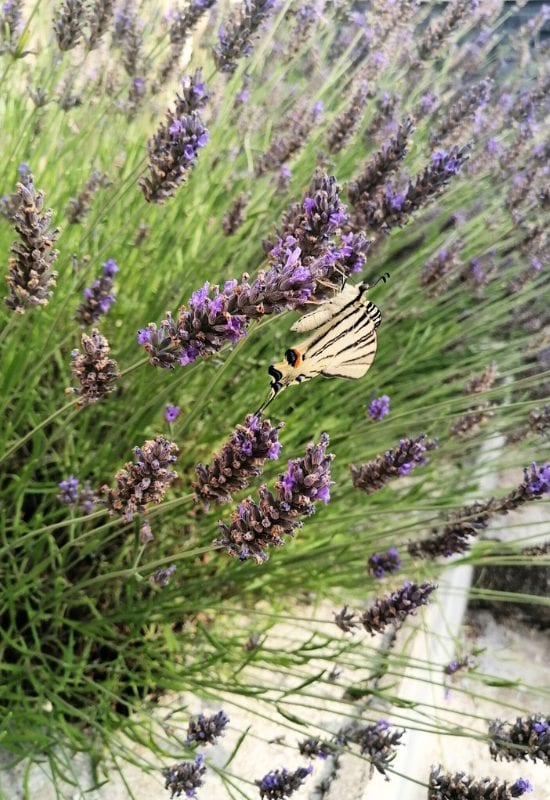
Lavender must be all pollinators’ favorite flower! It may be its enchanting and soothing fragrance, its long lasting and nectar rich blooms, but whenever you see a shrub of this herb, you will always see lots of bees, beetles and butterflies flying over them!
And the English lavender variety is arguably one of the very best to attract butterflies to your yard; it has by far the most perfect (essence like aroma, not soapy, like her French sister, Lavandula stoechas).
What is more, it is a very tough little bush, and the blossoms are massive; they will literally cover the whole plant for two months in summer and sometimes again in fall.
In lilac, white, pink, or bluish or violet, they come at the end of the stems in dense and heavenly smelling clusters. The evergreen foliage is thin, almost needle like and very finely texture, in shades of green, bluish green or even with silver overtones.
English lavender is ideal for borders, but also in large beds or rock gardens; a must in herb yards, it is also the ideal shrub for butterfly gardens – actually the one you cannot do without!
2: Butterfly Bush (Buddleja spp.)
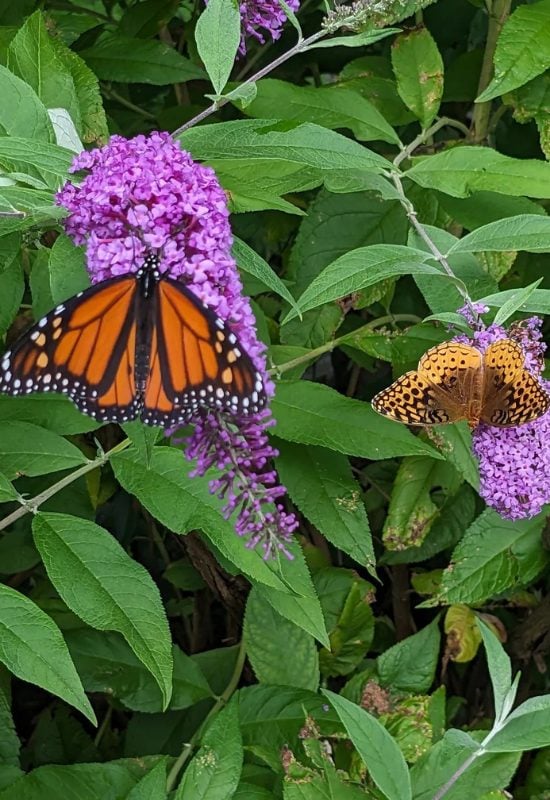
It’s all in the name: of course, butterfly bush attracts lots of… butterflies! There are about 140 species of this genus of shrubs, but the most common are Buddlejadavidii, Buddleja alternifolia and Buddleja x weieriana.
Some are even trees, while the smaller ones, like the ‘Petite’ cultivar series, only reach 3 feet in height (90 cm), which is good news if you have a small garden and you want fluttering wings… All produce long panicles packed with nectar rich flowers, and these can be violet, blue, purple, white, or in some cases even yellow.
Their fragrance is an added bonus, and the long lasting blossoms will feed pollinators into the late months of the season, even till frost!
With a compact habit, the lance shaped green foliage with gray greenish leaves will give structure and depth to borders, and some varieties are even evergreen!
Easy to grow and demanding very little care, butterfly bush is perfect for herbaceous borders and hedges, and very suitable for informal landscaping, containers, foundation planting and even in naturalized areas. And it is a must have in butterfly gardens.
3: Phlox (Phlox spp.)
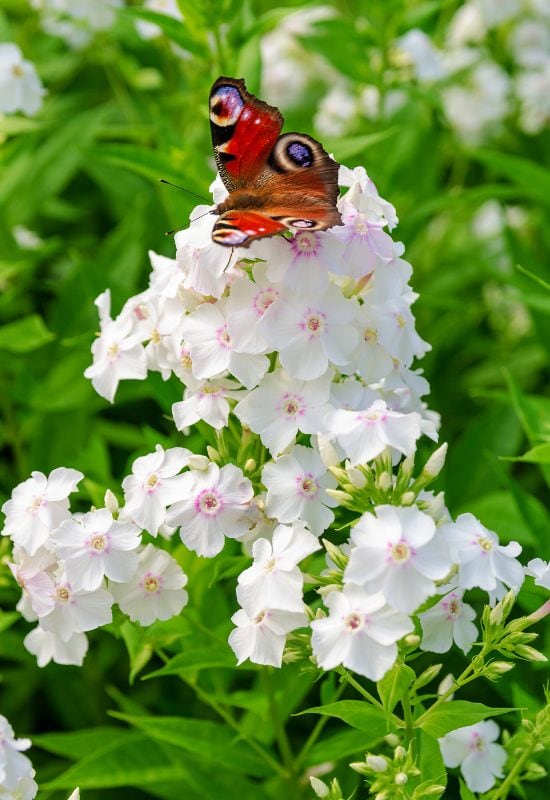
Phlox has an enchanting fragrance, reminiscent of carnations and pinks, and it looks like this is a magnet for butterflies, bees and other pollinators. With both perennial varieties, blooming in summer, and annual ones (like Phlox drummondii), which start earlier in spring, this genus of short flowering plants can keep your delicate winged visitors coming throughout the season.
The clusters of small but graceful flowers can be of many colors: white, pink, mauve, violet, blue, coral and magenta. And there is even a choice for wild, naturalized and shady areas, the start shaped blue winner of the Award of Garden Merit by the Royal Horticultural woodland phlox (Phlox divaricata). The stems also offer you green pointed leaves to form lovely clumps, in some cases, semi evergreen.
Ideal for group planting in garden beds, or even in borders, and a real must in cottage gardens, all phlox varieties require low maintenance but offer you bright colors, long lasting blooms, a heavenly smell, and butterflies dancing on their floral displays.
4: American Elder (Sanbucus canadensis)
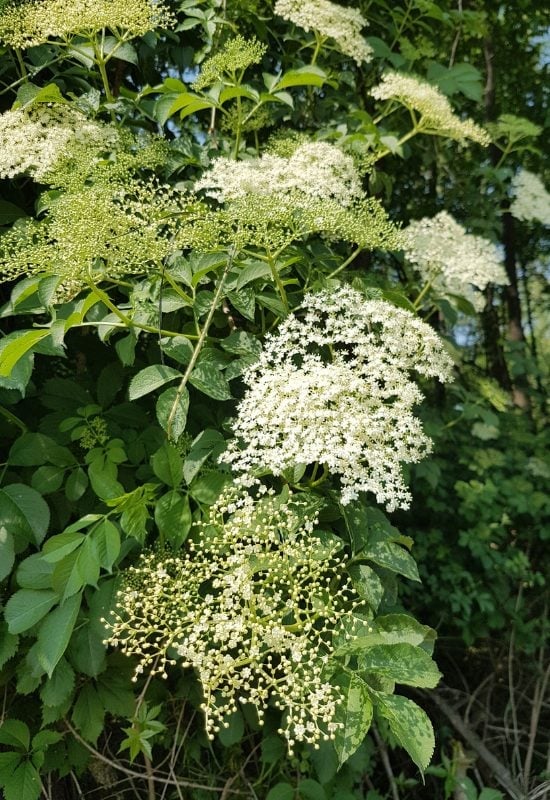
Have you ever walked past an American elder shrub without seeing butterflies all over it? Surely not! This fast growing bush is indeed a favorite and safe refuge for our colorful winged insects, which love its nectar during its bloom time, in summer.
The large flat clusters of small white flowers attract them with their lemon scent, and they also enchant us when we get close to them.
Do look at the closely, because they are actually very pretty, with five very harmonic petals and pistils like rays between them, with pale cram yellow anthers.
And this is how your garden fluttering visitors see them. Followed by its famous, edible berries of a shiny black color, also used for wine and spirits, this bush will decorate your green space well into the fall. And the lush, herbaceous looking foliage, healthy and dense, is another shelter and corridor for little fauna.
America elder is ideal for naturalized areas, river banks and informal gardens to fill borders and hedges or windscreens, not just with foliage, blooms and berries, but with butterflies too: and very fast!
5: Sage (Salvia spp.)
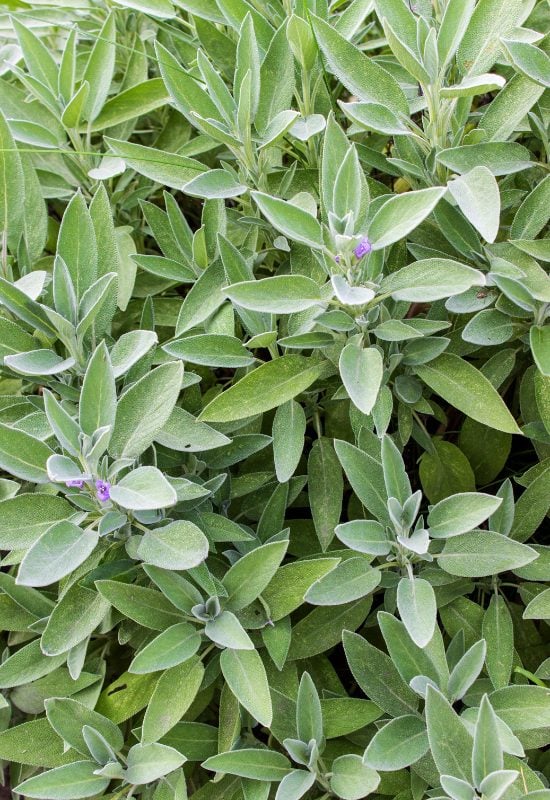
We love sage for cooking, but there are many varieties of Salvia, or sage, even for decorative purposes, not just the herb (Salvia officinalis) – and butterflies love them all! The flowers are small but plentiful, arranged in dense whorls around the stems, and they look like little hoods.
While the main range of shades is blue to violet, and in some cases very intense (like with ‘Indigo Girls’ if you want a vibrant color), there are also red ones, like ‘Hot Lips’ or bicolor (‘Little Kiss’ with white and carmine), ivory on purplish stems (‘Phyllis Fancy’ and the super purple with elongated blossoms ‘Love and Wishes’.
6: Yarrow (Achillea spp.)
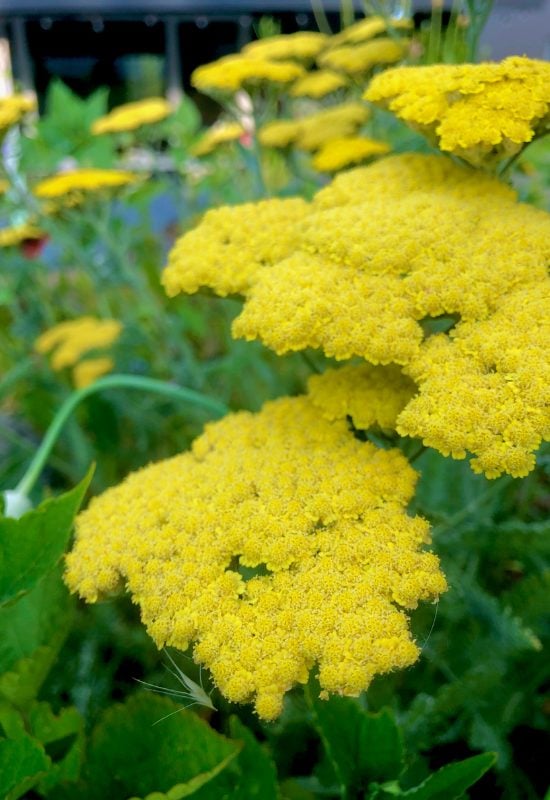
Yarrow is another flowering plant you will never see without lots of pollinators, butterflies, bees and it is a favorite of beetles too. And it is also another sturdy and easy to grow perennial with lots of varieties in different shades… And how could our little winged friends resist those heliports, or landing sites filled with nectar rich blooms?
The inflorescences, (corymbs, technically) are in fact flat and perfect to rest on when feeding… And they can be quite large, especially when clustered all together as they do and in lots of colors…
You can have white, yellow, red, pink, bright magenta and even rare tonalities like coral, peach and brick! Lasting all through the hot months of summer, they come atop incredibly finely textured, fern like, often aromatic and semi evergreen foliage as well!
7: Joe-Pye Weed (Eupatorium maculatum)
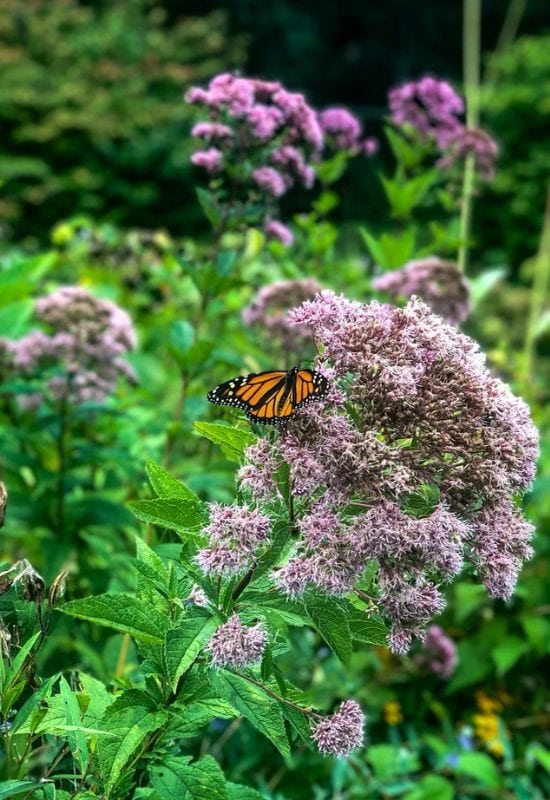
Like all the other species of Eupatorium, Joe-Pye weed is a great attraction for butterflies and other pollinators, but it is arguably the most popular garden variety.
Maybe this is because it is easy to grow, or maybe because it has very large and dense clusters of flowers rich in nectar, that brighten up your garden all through the late season!
And it is also loved by experts, as the cultivar ‘Riesenschrim’ has even won the prestigious Award of Garden Merit by the Royal Horticultural Society.
Growing tall in a short time, little insects can see it from a distance, as can visitors to your land and passers by… In shades from rose to purplish, with a strong lavender palette, it will bring its showy floral displays above your head, while the large, serrated and pointed elliptical leaves will be at eye level, disposed like star rays around the stems.
8: Egyptian Star Flower (Pentas lanceolata)
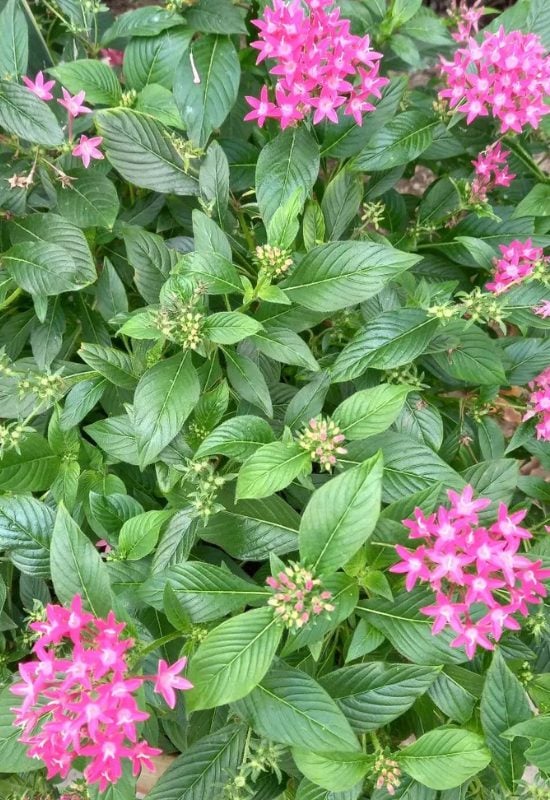
For butterflies in a garden in warm and sunny climates, Egyptian star flower is a great choice, sometimes also called with its official name, Pentas. Its name suggests the shape of the flowers, but it is actually slightly deceptive, because they are actually like long trumpets, but they open into five pointed stars.
They come in round clusters of about 4 inches in diameter (10 cm) and they are very elegant throughout the summer months. You can choose between white, red, pink and lilac varieties, and you can grow it as an annual, planting it in spring, if you live in a cold region.
9: Lantana (Lantana spp.)
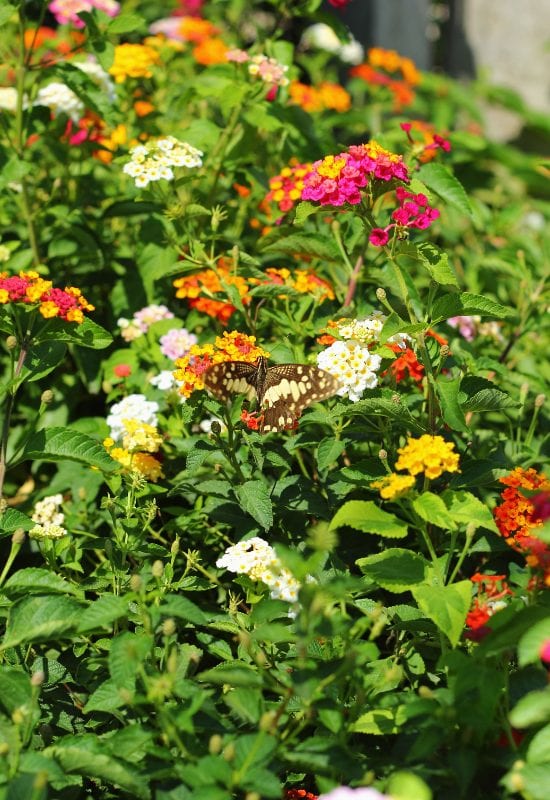
What an extraordinary flowering shrub or perennial is lantana! Its blooms extends all the way from spring to fall, and I have seen it flowering even in winter, in warm countries! This means a steady source of food for many months for butterflies, and this is why they love it.
10: Sunflower (Helianthus annuus)
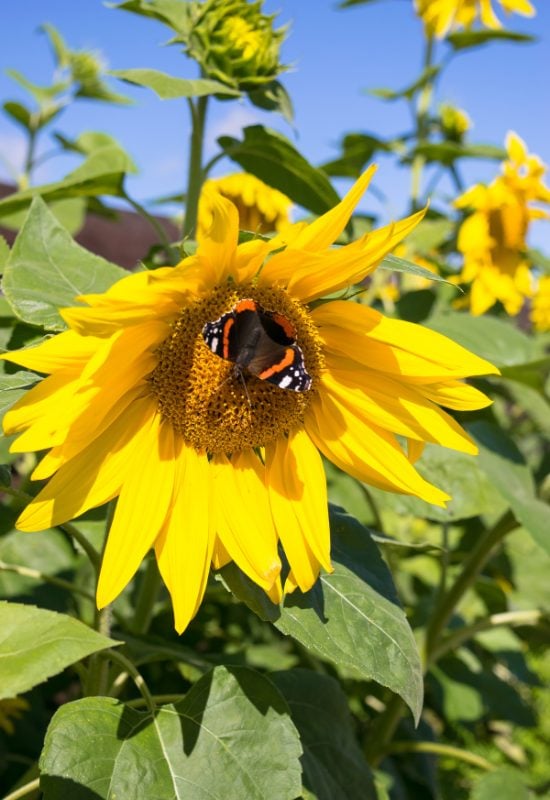
Just imagine how much food butterflies can find on a single sunflower! And in fact, it is not a single bloom, but a large daisy like inflorescence, with many little flowers in the disk as well as in the rays! And because they can be 14 inches across (35 cm) or even more, there’s plenty for all pollinators, and later birds when the nutritious seeds come.
11: Daylily (Hemerocallis spp.)
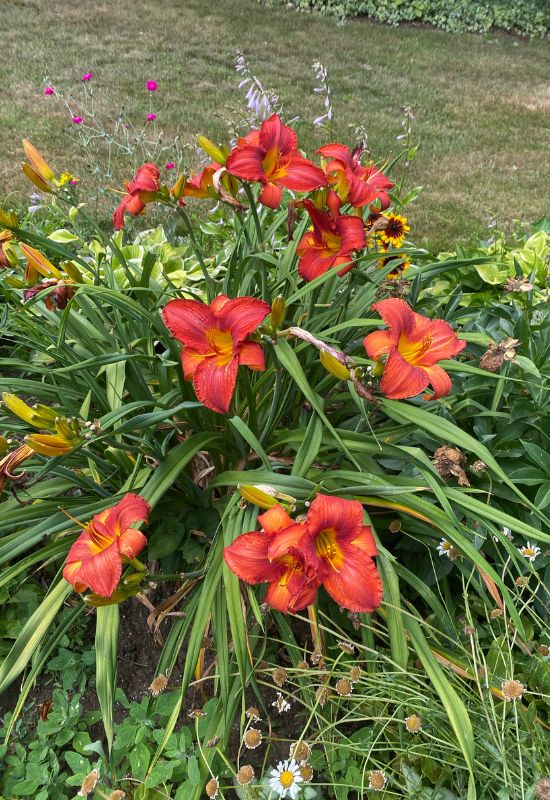
It’s no wonder daylily is one of the most popular flowering perennials, and not just with gardeners, but with butterflies as well! Its big blooms only last one day, but each plant produces loads and for a long time, from mid to late summer.
12: Cardinal Flower (Lobelia cardinalis)
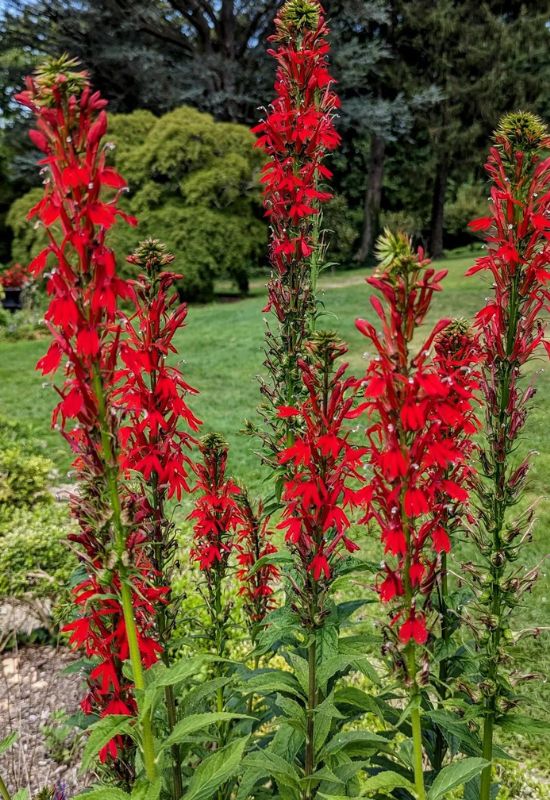
Winner of the Award of Garden Merit by the Royal Horticultural Society, cardinal flower is a Lobelia variety with long stems that fill with red blooms till late in the season. These give it its name (though the color is more like an Archbishop’s robe, fiery crimson) and they also send out clear signals to butterflies…
13: Red Hot Poker (Kniphofia spp.)
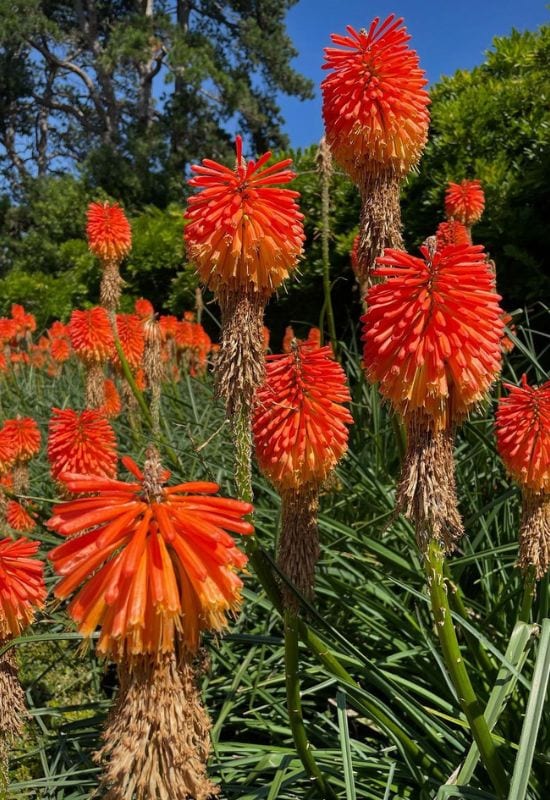
You will never be able to reach the nectar in the flowers of red hot poker, a.k.a. torch lily, but butterflies will! And in fact they will come in great numbers, because this decorative perennial from Africa keeps it safe for them.
In fact, the many tubular flowers that literally pack the upright stems keep their sweet treasure at the very end, which makes it difficult for other pollinators to get. But our lepidoptera have a secret weapon, their long proboscis (tongue) can extend and get to it, as do the long bills of hummingbirds!
14: Coneflower (Echinacea spp.)
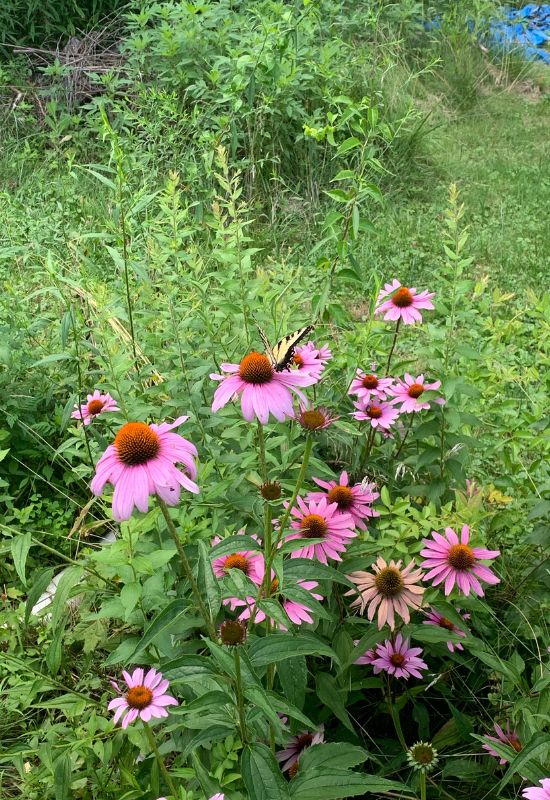
Who knows if butterflies are aware that coneflowers have great medicinal qualities and they help the immune system? For sure they know that they are very rich in nectar and not just healthy for humans but also for them!
15: African Lily (Agapanthus spp.)
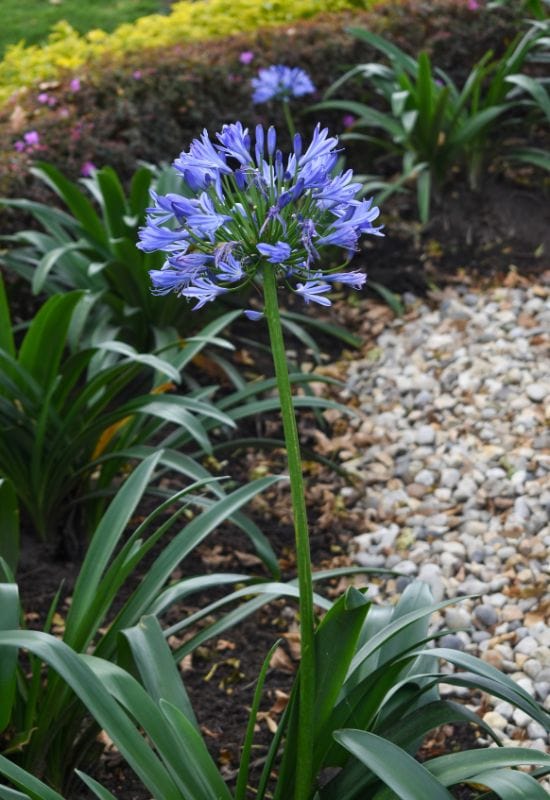
And finally, a start from the rain forests of the Cape Peninsula: African lily, or Agapanthus! It is obvious that butterflies cannot resist the appeal of the big colorful clusters of blooms of this amazing perennial flowers
